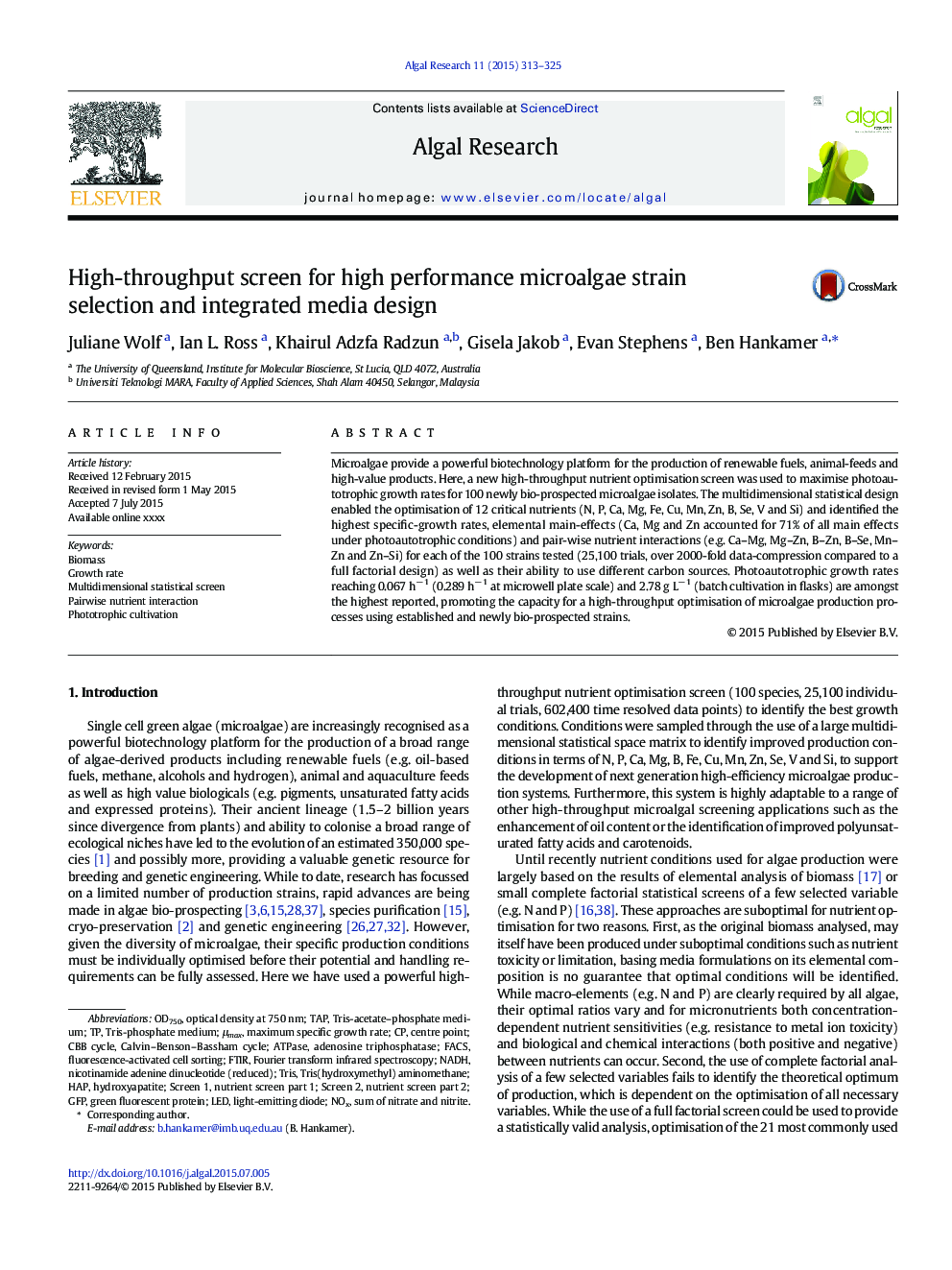| Article ID | Journal | Published Year | Pages | File Type |
|---|---|---|---|---|
| 8088009 | Algal Research | 2015 | 13 Pages |
Abstract
Microalgae provide a powerful biotechnology platform for the production of renewable fuels, animal-feeds and high-value products. Here, a new high-throughput nutrient optimisation screen was used to maximise photoautotrophic growth rates for 100 newly bio-prospected microalgae isolates. The multidimensional statistical design enabled the optimisation of 12 critical nutrients (N, P, Ca, Mg, Fe, Cu, Mn, Zn, B, Se, V and Si) and identified the highest specific-growth rates, elemental main-effects (Ca, Mg and Zn accounted for 71% of all main effects under photoautotrophic conditions) and pair-wise nutrient interactions (e.g. Ca-Mg, Mg-Zn, B-Zn, B-Se, Mn-Zn and Zn-Si) for each of the 100 strains tested (25,100 trials, over 2000-fold data-compression compared to a full factorial design) as well as their ability to use different carbon sources. Photoautotrophic growth rates reaching 0.067 hâ 1 (0.289 hâ 1 at microwell plate scale) and 2.78 g Lâ 1 (batch cultivation in flasks) are amongst the highest reported, promoting the capacity for a high-throughput optimisation of microalgae production processes using established and newly bio-prospected strains.
Keywords
OD750FACSoptical density at 750 nmTRISGFPμmaxNOxadenosine triphosphataseATPasetris(hydroxymethyl) aminomethaneMaximum specific growth ratefluorescence-activated cell sortinglight-emitting diodeLEDBiomassTAPFTIRFourier transform infrared spectroscopyNADHGrowth ratenicotinamide adenine dinucleotide (reduced)Hydroxyapatitegreen fluorescent proteinHAp
Related Topics
Physical Sciences and Engineering
Energy
Renewable Energy, Sustainability and the Environment
Authors
Juliane Wolf, Ian L. Ross, Khairul Adzfa Radzun, Gisela Jakob, Evan Stephens, Ben Hankamer,
